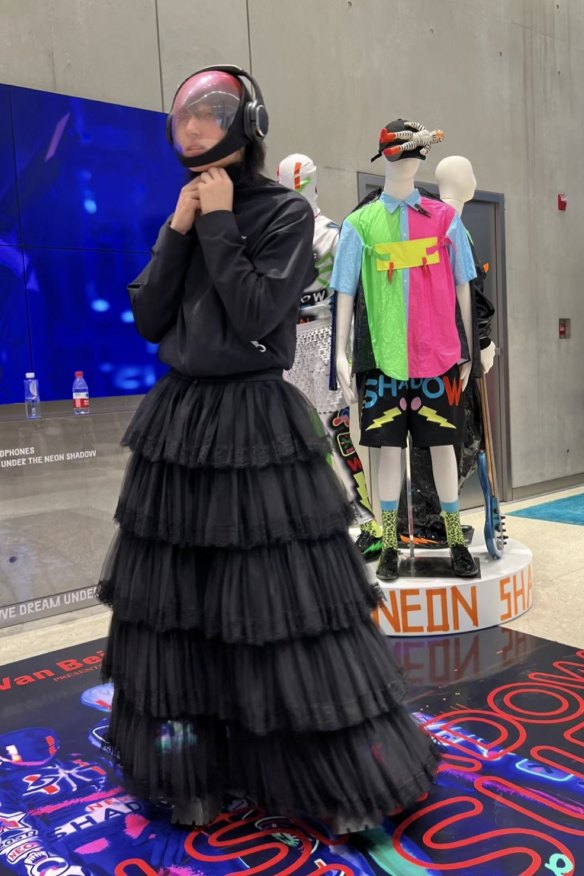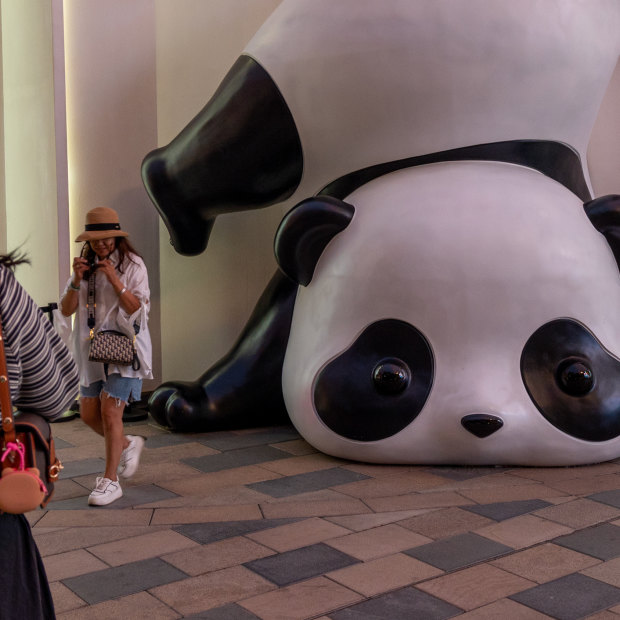By Eryk Bagshaw
China has proposed a new law that would punish clothes that hurt the feelings of the Chinese nation.Credit: Sanghee Liu
Save articles for later
Add articles to your saved list and come back to them any time.
Kiko Liu strolls down Sanlitun’s high street in central Beijing. The 19-year-old student is wearing a long, pink skirt and a black shirt. His hair is dyed blond.
Liu stands out in any crowd, but his elegant frame is even more vibrant in China where despite decades of high-end fashion flooding into the world’s largest consumer market, cross-dressing remains controversial.
“I can accept people pointing fingers at me on the street,” he says. “It’s okay for men to wear women’s clothes and vice versa. It’s 2023, people should be liberal in such an era as long as they don’t do something abnormal or against ethics.”
Liu’s confidence masks his rising anxiety about a new law that could make it illegal to wear clothes that “undermine the spirit or hurt the feelings of the Chinese nation”.
Fashion student Kiko Liu says the new proposal is ridiculous.
“Whose ‘spirit’ and ‘feelings’ are hurt? Who, or how many people, can represent the ‘Chinese nation’?,” says Armstrong Zhang, a close observer of China’s legal affairs in Beijing who works under a pseudonym because public criticism of the Chinese government is politically sensitive in China.
The draft law, which closes to public feedback on Saturday, threatens fines of up to 5000 yuan ($1000) and 15 days in detention. So far, it has been inundated with more than 100,000 submissions, most of them negative.
“To be honest, I couldn’t believe it,” said Lao Dongyan, a professor of law at Tsinghua University.
Legal experts have questioned how China will define laws based on hurt feelings. Credit: Sanghee Liu
“It is a concept with extremely vague connotations. It will inevitably lead to the selective enforcement of administrative power.”
Zhang says the goal of the legal system in China is to standardise social behaviour and “spread goodness and restrain evil”.
“But laws and regulations which may lead to people attacking each other are obviously against the original intention of the law.”
Si Weijiang, a lawyer at Shanghai DeBund, says the law will make it easy to “impose administrative penalties on daily expressions”.
Lao believes it will bog down courts with unnecessary enforcement, open a breeding ground for corruption and intensify the conflict between the police and the public, bringing new risks to Beijing’s prized goal of social stability.
“The spirit and feelings of a nation belong to the affairs of culture and spirit, which can be advocated by the state, but should not be carried out through law enforcement,” he said.
The draft law has received more than 100,000 submissions since it was published at the beginning of September.Credit: Sanghee Liu
The law has not been developed in isolation. It is the latest in a long line of legal changes aimed at solidifying growing nationalism in China under President Xi Jinping. The changes have swept the business sector through security crackdowns on foreign-owned firms, made patriotic education mandatory in Hong Kong and now threaten to regulate how people dress themselves.
“The legislation and provisions may stimulate the wanton spread of populism or extreme nationalism, further worsen the public opinion environment in the public domain,” said Lao.
Fashion has a long history of being used by political leaders in China to instil political loyalty. The Qing dynasty used the Manchu dress as a form of social control. In the 19th century, Chinese men were forced to shave their heads and braid their hair in a queue. When they were deposed by Han-Chinese revolutionaries in the early 20th century, the Manchu style came to be seen as a form of imperial oppression. By the 1950s, Mao suits had become ubiquitous, driven by both scarcity and patriotic unity, they transformed into a symbol of Communism itself.
Liu, who grew up as China’s economy boomed in the early 2000s, worries the law will start another cycle of fashion being used as a political weapon.
“If the law goes ahead, everyone would have to wear the same? What’s the point?” he says.
“So many years after reform and opening up, people should be more free and not be suffocated by all the regulations and restrictions.”
Shen Guohua in a traditional Chinese costume in Beijing’s Sanlitun district. Credit: Sanghee Liu
Nearby, film student Shen Guohua, is dressed in a flowing mint green robe. Two swords hang from the 17-year-old’s hip.
“Dressing means personality to me,” she says, describing the proposed changes to the law as “not good”.
Shen’s dress is a traditional Chinese costume, but such is the popularity of robes in traditional dress across East Asia, that other Chinese historical outfits have been confused for Japanese kimonos, triggering nationalist responses from officials and members of the public who view the Japanese as historical invaders and modern economic rivals.
In September, a woman was asked to leave a park in Wuhan after her Chinese Tang Dynasty dress was mistaken for a kimono. In August last year, a woman wearing a light kimono, known as a yukata, was reprimanded by in Suzhou and later arrested for arguing with police.
Online, Chinese internet users accused officials of turning into the moral police while criticising their hypocrisy.
“The word ‘cadre’ is from Japan (Kanbu),” said one. “Does it hurt the feelings of the nation when they speak it?”
Police patrol the street Beijing’s Sanlitun district last week. Credit: Sanghee Liu
In Sanlitun, Liu’s dress is more extravagant than most, but even the pink helmet-wearing, tiered-ruffle skirt-making aficionado treads carefully through the modern boundaries of Chinese self-censorship.
“I think this law is ridiculous. Everyone has different aesthetic standards. Just like my skirt,” he says.
“However, as Chinese citizens, we should abide by laws and regulations, make sure our deeds and dressings are not out of line, and not damage the image of the Chinese nation.”
Get a note directly from our foreign correspondents on what’s making headlines around the world. Sign up for the weekly What in the World newsletter here.
Most Viewed in World
Source: Read Full Article








